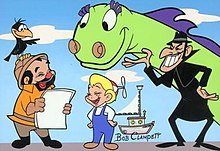
Bugs Bunny is an American cartoon character created in the late 1930s at Warner Bros. Cartoons and voiced originally by Mel Blanc. Bugs is best known for his featured roles in the Looney Tunes and Merrie Melodies series of animated short films, produced by Warner Bros. Earlier iterations of the character first appeared in Ben Hardaway's Porky's Hare Hunt (1938) and subsequent shorts before Bugs's definitive characterization debuted in Tex Avery's A Wild Hare (1940). Bob Givens, Chuck Jones, and Robert McKimson are credited for defining Bugs's design.

Porky in Wackyland is a 1938 Warner Bros. Looney Tunes animated short film, directed by Bob Clampett. The short was released on September 24, 1938, and stars Porky Pig venturing out to find the last do-do bird, which he finds in Wackyland, a land that makes no sense located in Darkest Africa.

Robert Emerson Clampett Sr. was an American animator, director, producer and puppeteer best known for his work on the Looney Tunes animated series from Warner Bros. as well as the television shows Time for Beany and Beany and Cecil. He was born and raised not far from Hollywood and, early in life, showed an interest in animation and puppetry. After dropping out of high school in 1931, he joined the team at Harman-Ising Productions and began working on the studio's newest short subjects, Looney Tunes and Merrie Melodies.
An animated series is a set of animated television works with a common title, usually related to one another. These episodes should typically share the same main heroes, some different secondary characters and a basic theme. Series can have either a finite number of episodes like a miniseries, a definite end, or be open-ended, without a predetermined number of episodes. They can be broadcast on television, shown in movie theatres, released on the internet or direct-to-video. Like other creative works, animated series can be of a wide variety of genres and can also have different target audiences: both males and females, both children and adults.

The Goofy Gophers are animated cartoon characters in Warner Bros.' Looney Tunes and Merrie Melodies series of cartoons. The gophers are small and brown with tan bellies and buck teeth. They both have British accents. Unnamed in the theatrical cartoons, they were given the names Mac and Tosh in the 1960s TV show The Bugs Bunny Show. The names are a pun on the surname "Macintosh". They are characterized by an abnormally high level of politeness.

Charles Dawson Butler, professionally known as Daws Butler, was an American voice actor. He worked mostly for the Hanna-Barbera animation production company and the Walter Lantz cartoon studio. He originated the voices of many familiar Hanna-Barbera characters, including Yogi Bear, Huckleberry Hound, Snagglepuss, Quick Draw McGraw and Baba Looey, Auggie Doggie, Loopy De Loop, Wally Gator, Snooper and Blabber, Dixie and Mr. Jinks, Hokey Wolf, Lippy the Lion, Elroy Jetson, Lambsy, Peter Potamus, The Funky Phantom and Hair Bear. While at Walter Lantz, he did the voices of Chilly Willy, Smedley, Maxie the Polar Bear, Gooney, and Sam in the Maggie and Sam series.

Michael John Kricfalusi, known professionally as John K., is a Canadian illustrator, blogger, and former animator and voice actor. He is the creator of the animated television series The Ren & Stimpy Show, which was highly influential on televised animation during the 1990s. From 1989 to 1992, he was heavily involved with the first two seasons of the show in virtually every aspect of its production, including providing the voice of Ren Höek and other characters. In 2009, he won the Inkpot Award.
The following is the 1961–62 network television schedule for the three major English language commercial broadcast networks in the United States. The schedule covers primetime hours from September 1961 through April 1962. The schedule is followed by a list per network of returning series, new series, and series cancelled after the 1960–61 season.

Cecil Turtle is a fictional character in the Warner Bros. Looney Tunes and Merrie Melodies series of films. Though he made only three theatrical appearances, Cecil has the unusual distinction in that he is one of the very few characters who were able to outsmart Bugs Bunny, and the only one to do so three times in a row and at the rabbit's own game. Cecil often gives Bugs the taunting nickname of "Speedy" when addressing the rabbit.

Tortoise Wins by a Hare is a Merrie Melodies cartoon released on February 20, 1943, and directed by Bob Clampett. It stars Bugs Bunny and Cecil Turtle. It is a sequel to 1941's Tortoise Beats Hare, with footage from said cartoon briefly shown at the beginning. It is also the first short to feature Robert McKimson's design of Bugs Bunny.
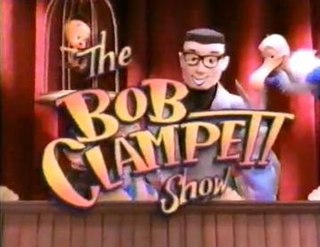
The Bob Clampett Show is an animated anthology television series which ran from 2000 to 2001. The show features animated theatrical shorts from the Warner Bros. library that were animated or directed by Bob Clampett, as well as a selection of shorts from the Beany and Cecil animated television series. It originally was produced by and aired on Cartoon Network, with reruns airing at the tail end of Cartoon Network's Adult Swim block in the mid-2000s. Twenty-six episodes were made in all.

Gerardo Luigi Colonna, better known as Jerry Colonna, was an American musician, actor, comedian, singer, songwriter and trombonist who played the zaniest of Bob Hope's sidekicks in Hope's popular radio shows and films of the 1940s and 1950s. He also voiced the March Hare in Walt Disney's 1951 animated feature film Alice in Wonderland.

Matty's Funday Funnies is a 1959–1961 American animated anthology television series.
Matty Mattel was the boy mascot for Mattel Inc. Toymakers. As the "King of Toys," Matty was the host and sponsor of TV's Matty's Funday Funnies in the 1960s. Matty was part of Mattel's advertising from 1955 to 1970 and then renewed in the 1980s, printed in Mattel warranty information.

Time for Beany is an American children's television series, with puppets for characters, which was broadcast locally in Los Angeles starting on February 28, 1949, and nationally by the improvised Paramount Television Network from 1950 to 1955. It was created by animator Bob Clampett, who later reused its main characters for the animated series Beany and Cecil. The show won three Emmy Awards for best children's show.
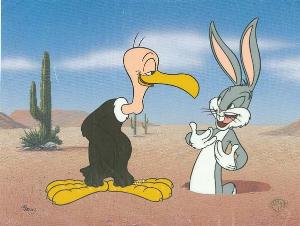
Beaky Buzzard is an animated cartoon character in the Warner Bros. Looney Tunes and Merrie Melodies series of cartoons.
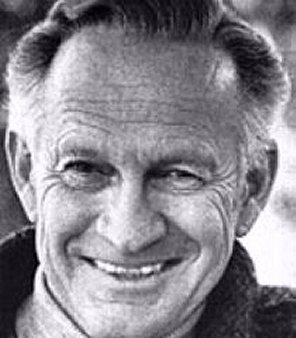
Walker Edmiston was an American actor and puppeteer.
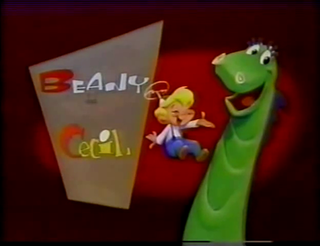
The New Adventures of Beany and Cecil was an animated revival of Bob Clampett's Beany and Cecil. It was produced in 1988 by DIC Animation City. Five half-hour episodes aired out of the thirteen in production during its original run. This incarnation of the show was developed, produced, and directed by Canadian animator John Kricfalusi.
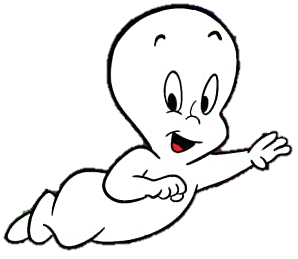
Casper the Friendly Ghost is a fictional character who serves as the protagonist of the Famous Studios theatrical animated cartoon series of the same name. He is a translucent ghost who is pleasant and personable, but often criticized by his three wicked uncles, the Ghostly Trio.
James Andrew MacGeorge was an American voice actor, puppeteer, stand-up comedian and writer. He is also credited Jim McGeorge and James MacGeorge.
